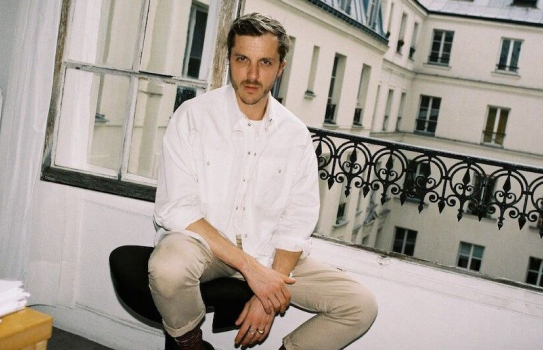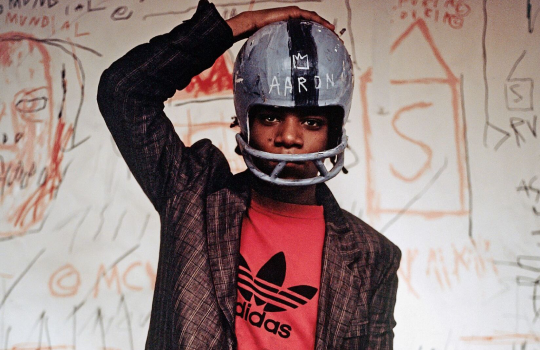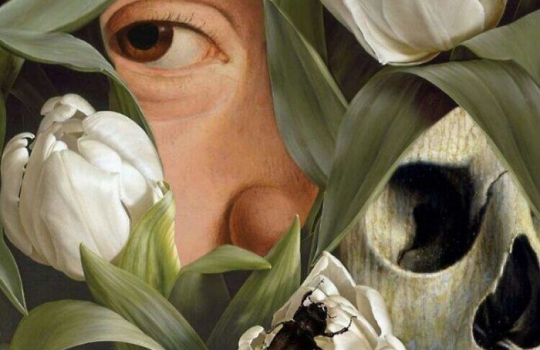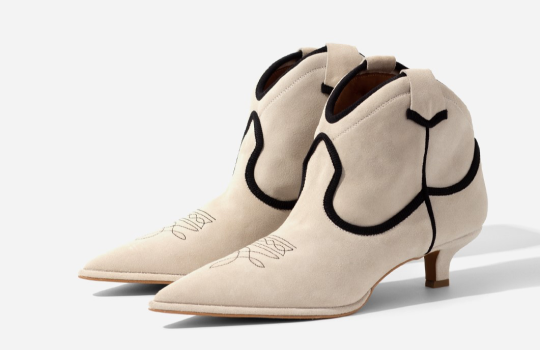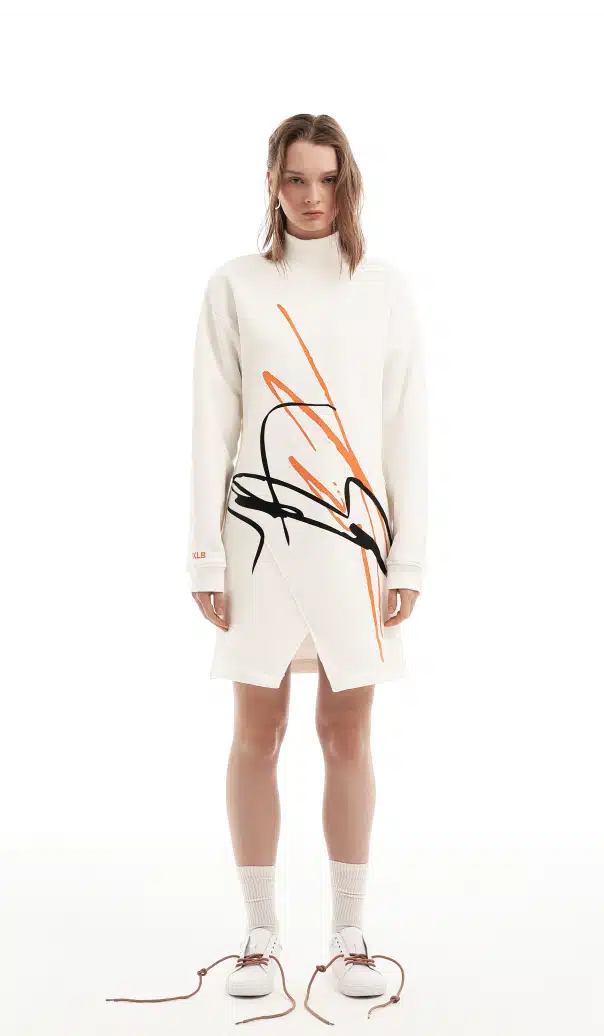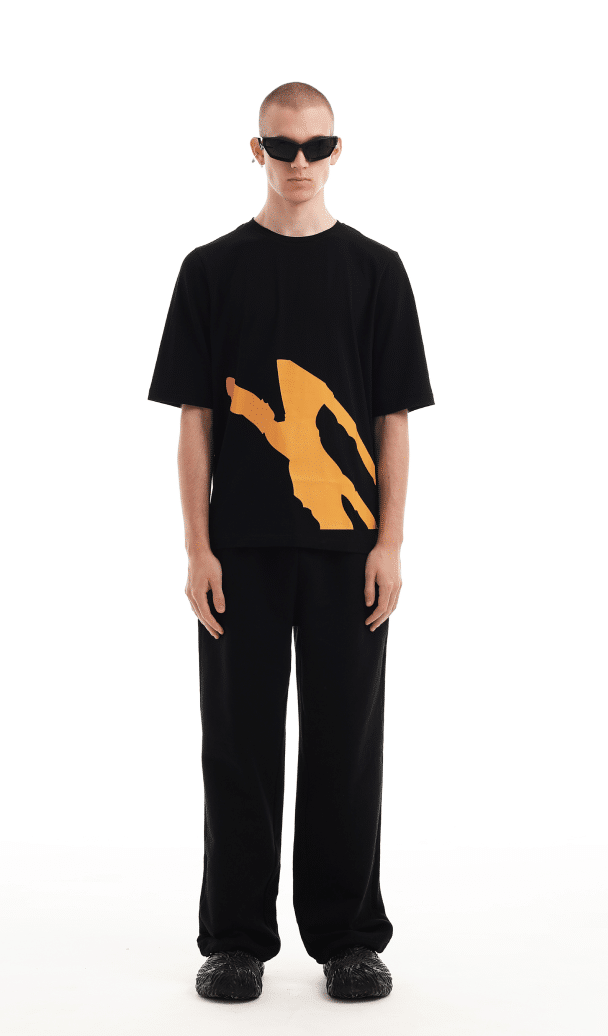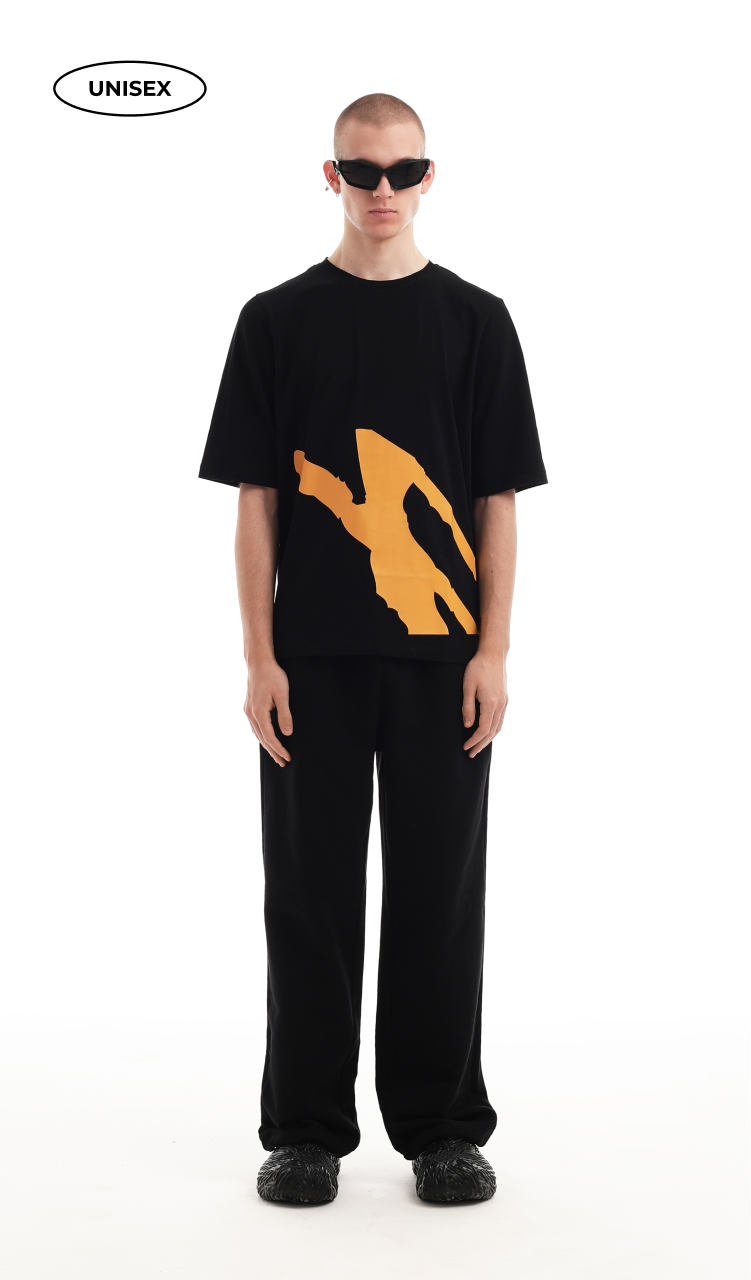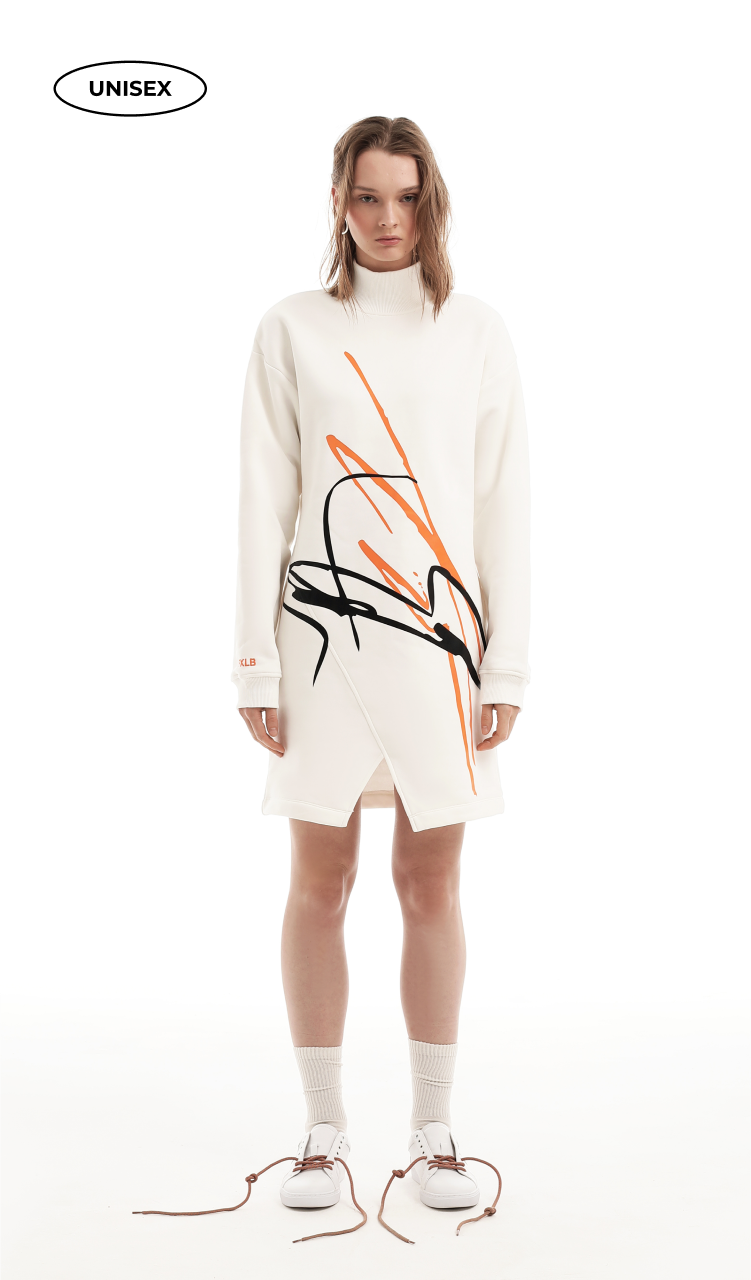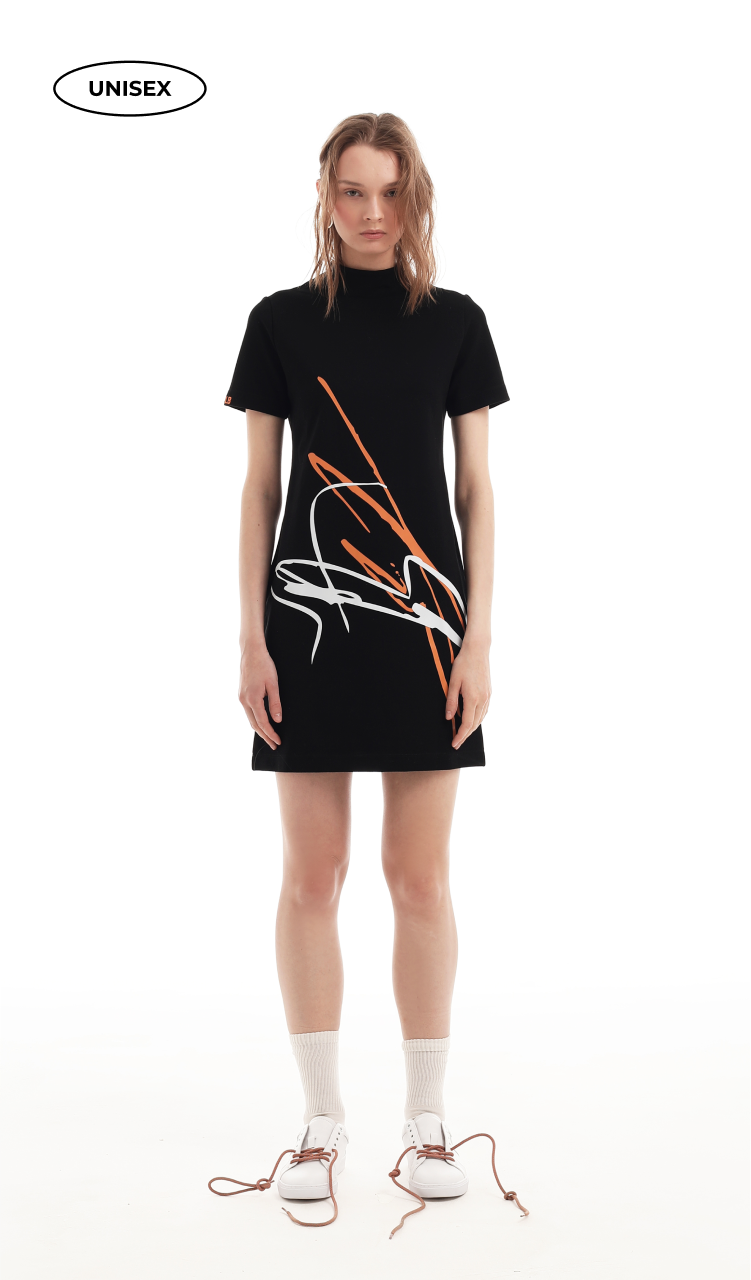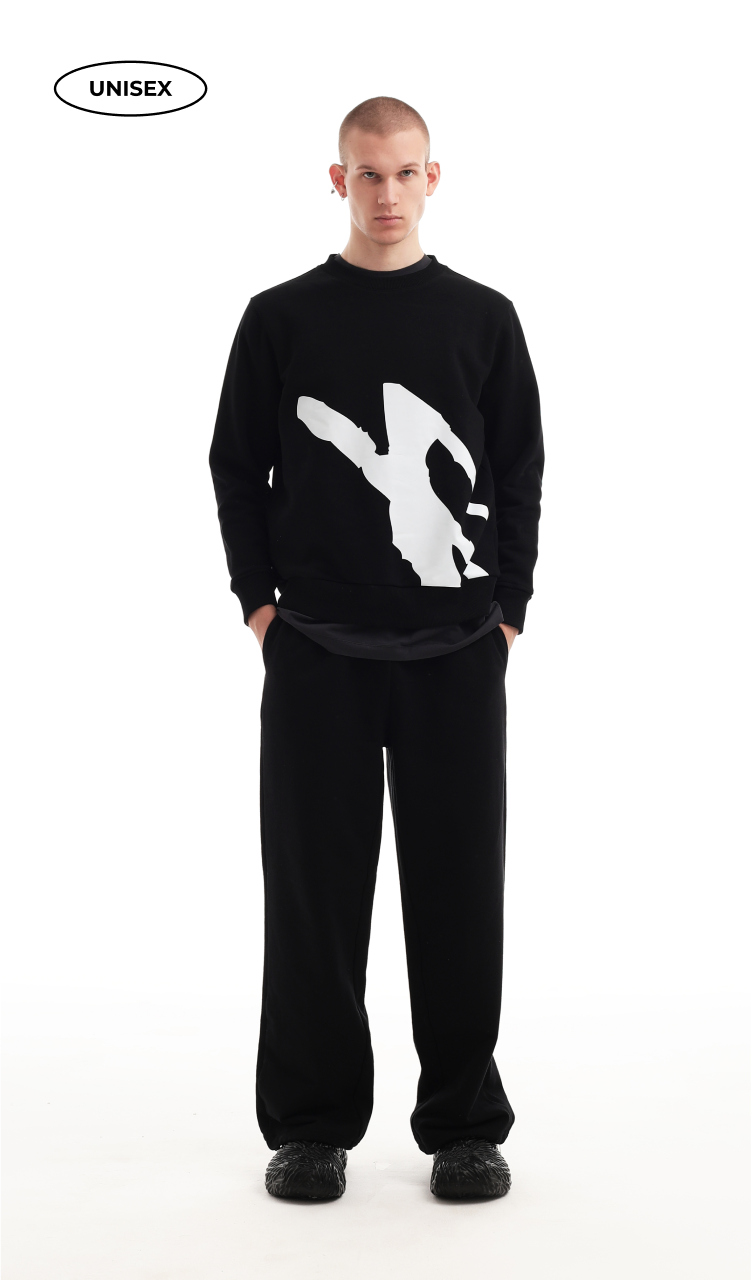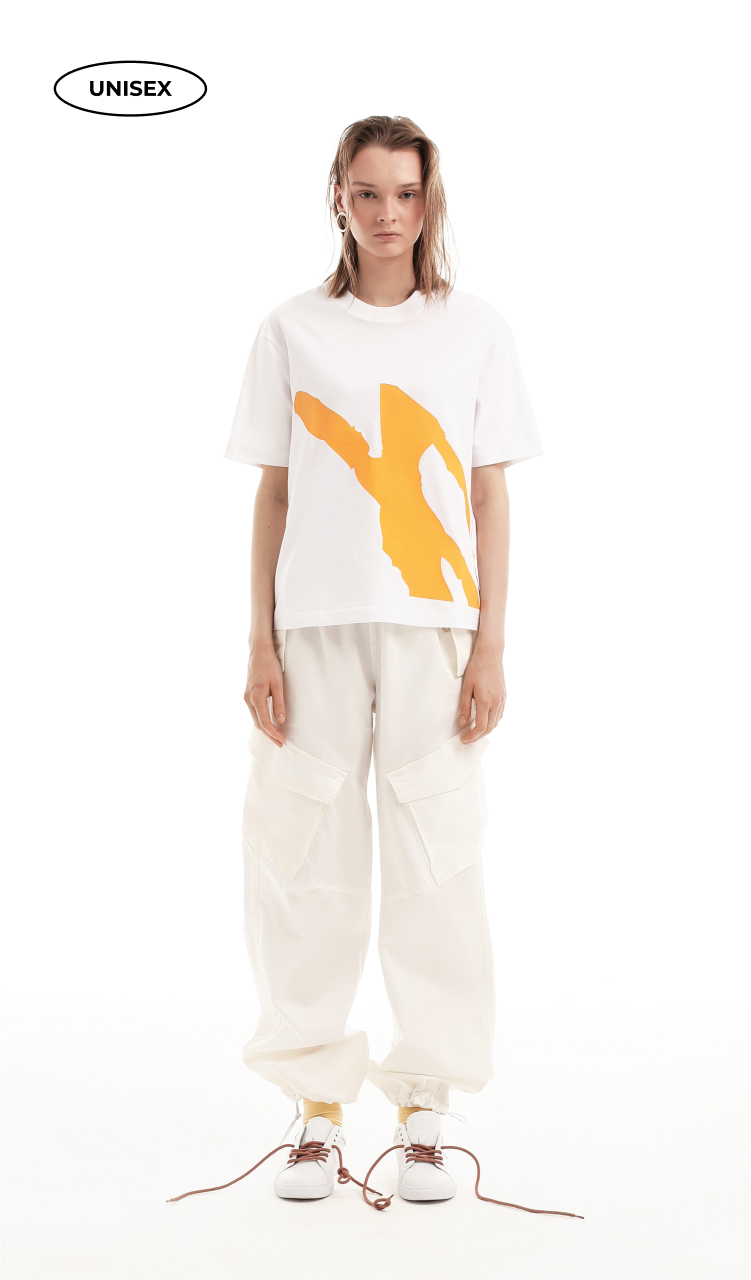Blog
A FASCINATING JOURNEY INTO THE CREATIVE WORLD OF JOEL ROBISON

Text: Maxim Nogotkov
Photo: Vitalie Burcovschi
February 6 2024
SHARE THE ARTICLE
Joel Robison is a famous fine art photographer from Canada who creates amazing images where the real world takes on unusual properties. The influence of the author’s inner world is clearly traced in his works. It makes them absolutely unique and highly recognizable. Joel has a great reputation in the world of photography and he has instructed over 900 students in 10 countries in the last 8 years.
His work has been used world wide by clients such as Coca-Cola, FIFA, Yahoo, Adobe, Oprah Magazine, Mariott, ArcAngel, Trevillion, PhotoNews Canada, and many more.
During 2013/2014 he worked exclusively with Coca-Cola and FIFA as the lead photographer and voice of social media on the FIFA World Cup Trophy Tour by Coca-Cola where he travelled and photographed more than 80 countries over a 9 month period.
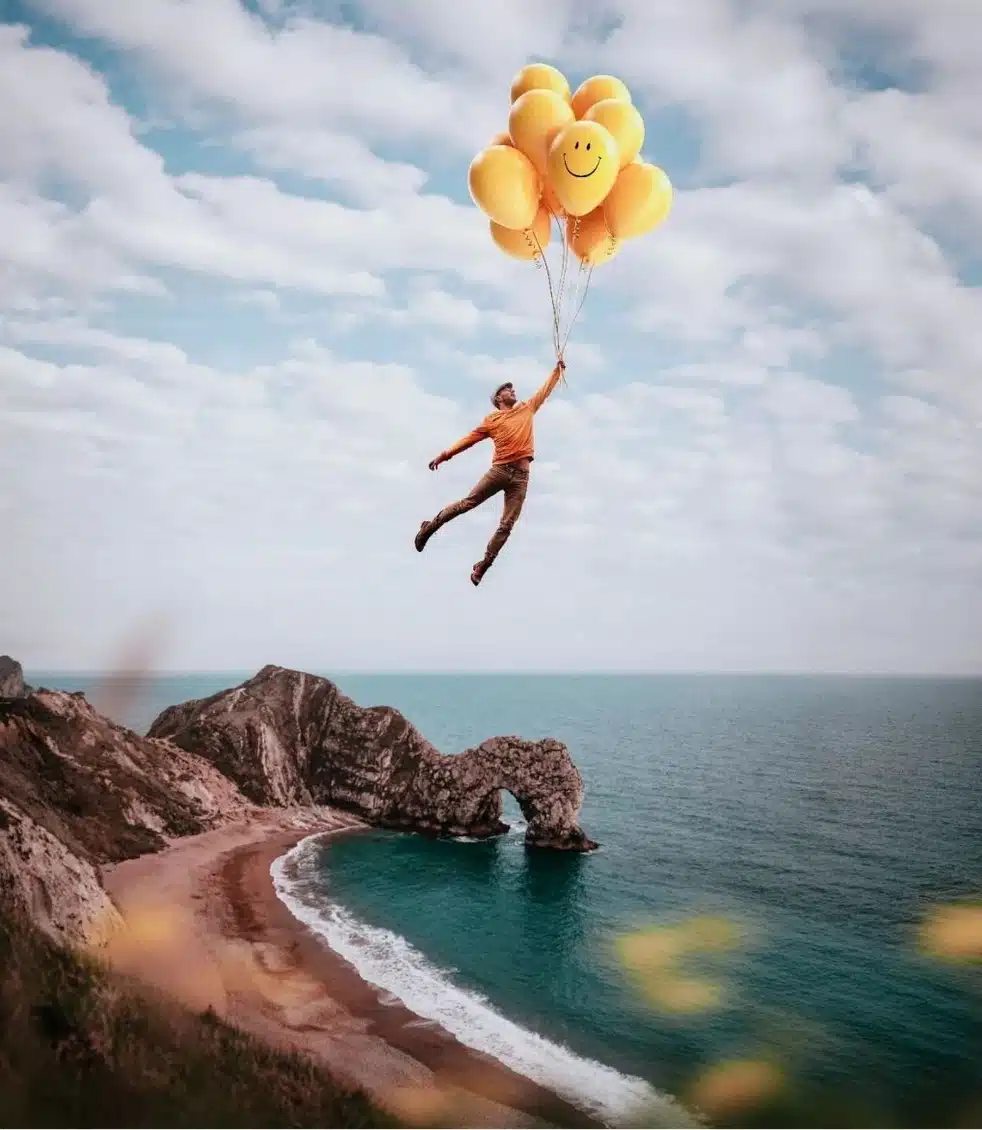
The events in our life have an impact on our creative path. Can you name 5 events in your life that have most strongly influenced you and your creativity?
I certainly agree that events in our lives really do shape our creative outputs and certainly my own life experiences have impacted me and my work. I think if I had to choose 5 I would choose:
– Attending my first Photography Meetup – I got started in the pre-instagram days and Flickr was where many photographers started to share their work. Through Flickr I was able to meet friends from across the globe and in 2011 a large group of us decided to meet for the first time and have a photography meetup of our own. That experience truly marked a new direction for me, it gave me a lot of confidence and a sense of community with other artists.
– Being Stuck in a Bad Relationship – It sounds bleak but being in a really unhealthy relationship was incredibly pivotal in my work. I needed an escape and photography was exactly that. I spent hours each day outside by myself taking photos that allowed me to live in a more peaceful or whimsical place than I was in at the time. This need for an escape was truly a way for me to develop a personal and connected theme of images.
– Moving To UK – In 2014 I moved to the UK on my own without knowing anyone there. It was a huge step and a big test of my own comfort zone but it really opened up my creativity. I met a lot of fellow creatives while living there and I was able to pursue art full-time for the first time. This experience of being in a new place really pushed me as I had to search for new locations, new opportunities, and new friends.
– Mental Health Struggles – In 2015-2017 I experienced a lot of personal life events that really impacted my mental health. I was impacted by suicide in my family and friends and it really changed the direction of my work for a while, because I needed to find a healthy way of processing all the emotions I was feeling. This really opened my eyes to how art can be used as a way to heal and express the most difficult of emotions.
– Teaching – Over the past 6 or 7 years I’ve been teaching workshops and classes around the world and this opportunity to teach other people has given me a lot of insight onto why I create and how I can help other people find the freedom to create their own stories. It’s given me a lot more of an opportunity to reflect
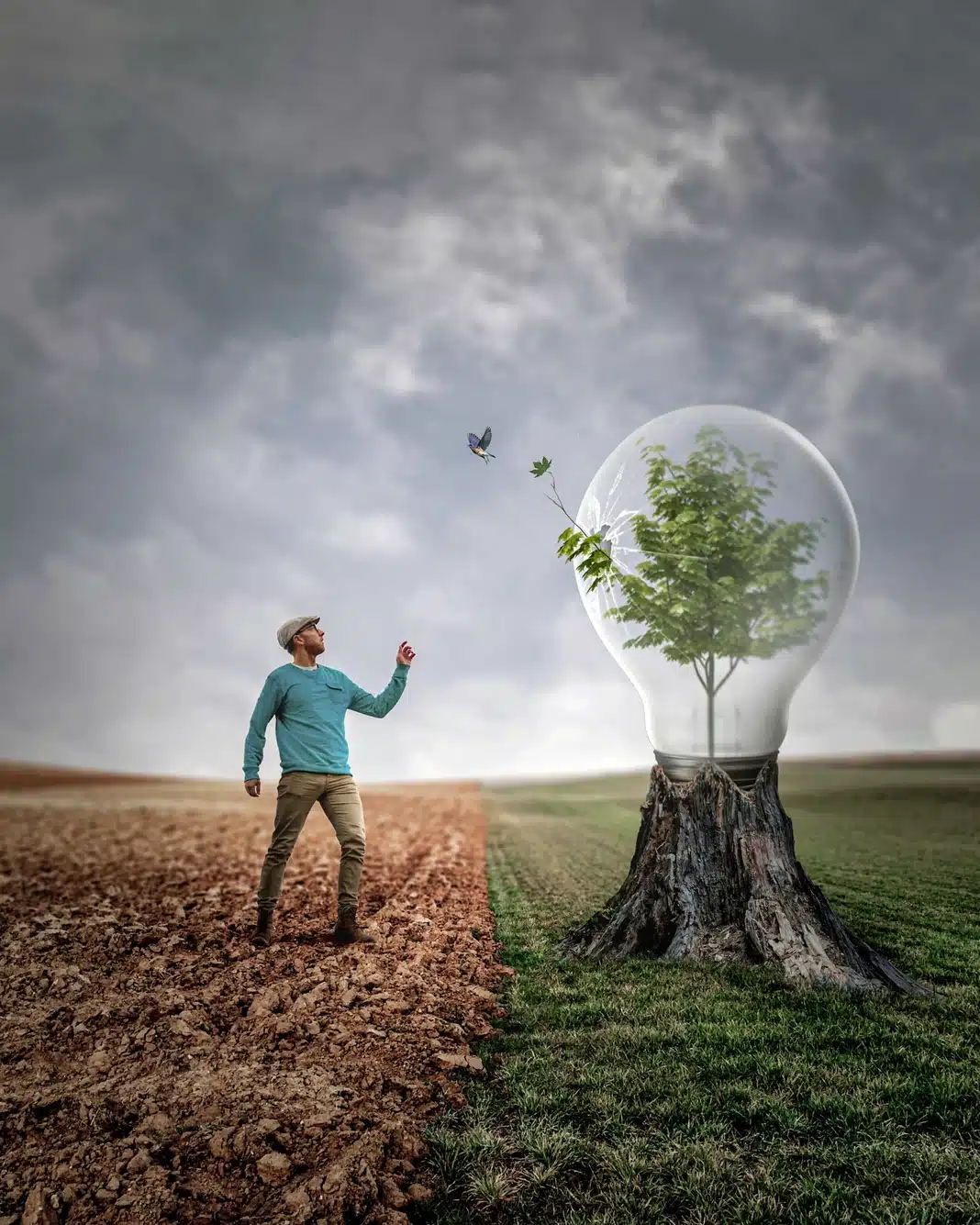
Your images have been used to train AI models without your permission or consent. How was this situation resolved? And do you think AI will ever be able to replace people in creativity? Can art exist without a "soul"?
As of right now, the situation hasn’t been resolved. There is, unfortunately, a big divide within the art community and it will take time for the legal side of things to work itself out. I think it will take even longer for the ethics to be defined. Just because something is allowed or accessible doesn’t always mean it’s ethical. I truly don’t believe AI will replace creativity, in my opinion AI Art is an output that someone agrees with, it’s not a creation that exists because of emotion, or imagination, or desire to share a message. I view AI as an image, but not necessarily art.
The real world takes on unusual characteristics in your images. How do ideas for your artwork come to you?
I like to say that I’m a professional daydreamer. I’ve always given myself permission to day dream and try to give myself the freedom to believe anything is possible. Many of my ideas start as a single object or location or word and then morph into an expression of something I’m feeling or thinking about, using that item or object as a visual touchstone. I get ideas mostly from just allowing myself to be alone with my thoughts without any distractions.
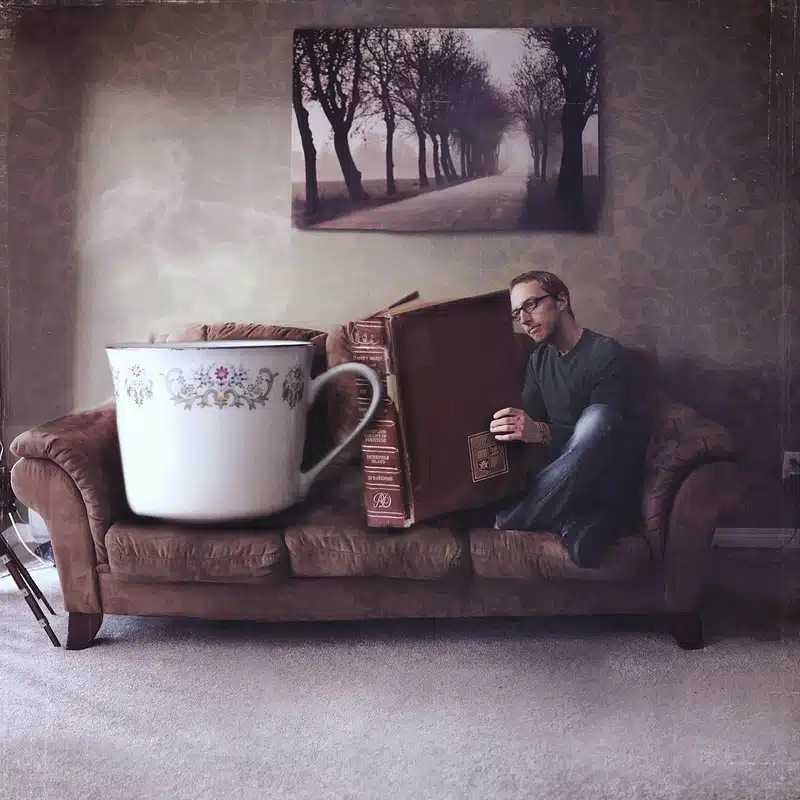
This year marks the 10th anniversary of your work as a full-time artist. Please share with our readers which images or stories in your paintings are your favorite.
This image has always been one of my favourites. I created it almost 10 years ago and for me it marks a definitive moment in my life. I took this photo right before I set off on a world tour where I was hired as a photographer. I was gone for 9 months and visited over 80 countries and during that time my entire life changed and this image always speaks to me of that moment just before everything changed. I remember creating it, it was a very calm evening and I was just alone with my thoughts and it felt like a dance creating it. Everything just worked exactly as I needed and it just fell together perfectly for me.
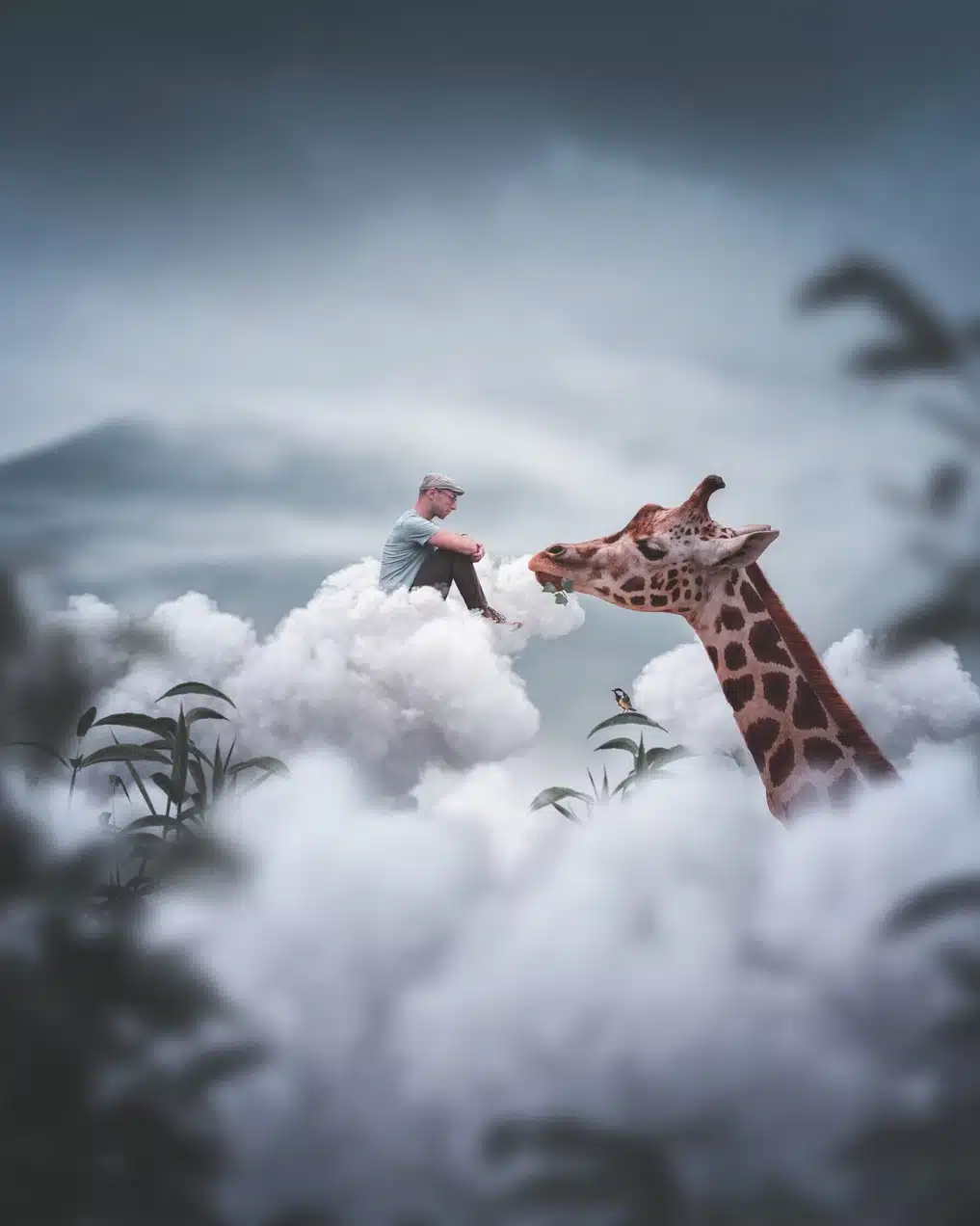
You have created a set of Creative Sparks cards. They are designed to give new ideas for creativity. How did you come up with the idea of creating this project? Do you use these cards in your creative work?
I created these cards during the pandemic. One of the questions I get asked the most is how I come up with ideas and the second question I get asked is what do I do when I get creatively blocked. These cards were my way of creating a tool that could help with both of those things. I often find that I create better work when I have a little bit of a constraint, a theme to create inside of. I designed these cards to provide that small amount of direction. They’re a helpful resource giving someone an opportunity to build a prompt that includes an item, a location, and an emotion and to create as story from the results. I started using the cards myself in 2021 and I’ve been using them almost weekly since, without fail they help me to find a new image to make.

You have had interesting and unusual collaborations. There is an opinion that artists decide to collaborate when they become cramped within their own creativity. Please tell us about this experience. What difficulties arose and what was the most interesting thing in the process? Have you ever had a desire to try yourself in completely new directions, perhaps even very far from the world of digital art?
Collaborations have been an avenue to explore new perspectives and push the boundaries of my creativity. The most interesting aspect is the fusion of different artistic visions. I’m always open to exploring new mediums and styles, perhaps even stepping outside the digital realm in the future.

There is a category of people who treat digital art with misunderstanding. What misconceptions do you think people may have about digital art? And what misconceptions and myths about this form of art have you had to debunk during your career?
A common misconception is that digital art lacks the depth and authenticity of traditional art. My journey has been about debunking this myth, showing that digital art can be as intricate and emotive. The challenge is in educating audiences about the potential and legitimacy of this medium.

You have managed to create a whole amazing world in your art. What inspired you when creating your fantastic worlds? How and what particularly influences your creative process and how do you manage to restore your resource on days when there is a creative crisis and burnout?
My inspiration comes from a blend of my cultural heritage, experiences in performing arts, and the surrealists who have influenced me. My creative process is a dynamic interaction between my imagination and the capabilities of AI tools. During creative blocks, I return to the basics – exploring nature, reading, and sometimes even taking a complete break to rejuvenate my creative energy.

The backstage of the creative process is always particularly attractive. It is always interesting to find out how a picture is born, what path it goes from conception to realization. Can you reveal this secret and describe your work process when creating digital art? How do you combine the technical aspects of digital art with your creative vision?
My process begins with a concept or emotion I wish to explore. I then translate this concept into digital form using DALL-E or Midjourney, followed by extensive refinement using digital tools like Procreate and Photoshop. The challenge lies in balancing technical precision with artistic expression, ensuring the final piece resonates both visually and emotionally.

What impact do you think digital art has had on the art world in general? And what do you think are the prospects for the development of this trend in art in the next 5-10 years?
Digital art has revolutionized how we perceive and interact with art, making it more accessible and diverse. In the next 5-10 years, I see it becoming even more integrated with virtual and augmented reality, offering immersive and interactive art experiences.
If there was a time machine and you could travel to any time from your past or future, at what point in time would you want to go and what would you say to yourself there in another time? What advice or recommendations would you give yourself?
If I could travel in time, I would visit my younger self in Moldova and encourage persistence and openness to new experiences. I would stress the importance of embracing every opportunity to learn, whether in art, technology, or life, as these experiences would be instrumental in shaping my unique artistic journey.


COMMENT
LEAVE A COMMENT
Actually, this article could
be in your email
Featured materials from FOXYLAB MAGAZINE
are available in our newsletters.
Subscribe and get a dose of inspiration!
SHARE THE ARTICLE

more articles
Since few seasons we have been assisting the triumphal comeback of denim. Behind this fashion trend there is mainly one man, The Perfect Designer of the Year according to Katie Granthe, Glenn Martens.
This article is about his artistic path, friendship with Andy Warhol, his relationship with Madonna, the tragic addition to the “27 Club” and his current relevance to the NFT.
Stress as a trigger to the emergence of the surrealistic digital collages. Spanish couple co creates art as a way to survive.
New York’s Gilder Center of American Museum of Natural History is now open. Stunning architectural wonders, fresh exhibitions, and immersive encounters…
Step into the world of Kachorovska’s Cherilyn, where unique enhancements combine style and comfort effortlessly…

want to share your story
with the world?
We're open to collaborating with creative and talented individuals like you. Leave us your email below, and let's connect for interviews, articles, and more.
don’t miss!
New drop
foxylab ny x Edward Acosta
New drop FXLB x Edward Acosta
A thin edge of seduction and the consumerism fetish is thoroughly blurred in Acosta’s art in the use of both light, and dark tones. Bold lines serve as a fashionable juxtaposition of a peaceful dream-like state and a vivid color, representing action and presence in the moment.
Since few seasons we have been assisting the triumphal comeback of denim. Behind this fashion trend there is mainly one man, The Perfect Designer of the Year according to Katie Granthe, Glenn Martens.
This article is about his artistic path, friendship with Andy Warhol, his relationship with Madonna, the tragic addition to the “27 Club” and his current relevance to the NFT.
Stress as a trigger to the emergence of the surrealistic digital collages. Spanish couple co creates art as a way to survive.
New York’s Gilder Center of American Museum of Natural History is now open. Stunning architectural wonders, fresh exhibitions, and immersive encounters…
Step into the world of Kachorovska’s Cherilyn, where unique enhancements combine style and comfort effortlessly…


